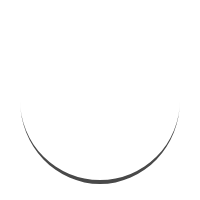Abstract
Free full text

Full text links
Read article at publisher's site: https://doi.org/10.1371/journal.ppat.1003301
Read article for free, from open access legal sources, via Unpaywall:
https://journals.plos.org/plospathogens/article/file?id=10.1371/journal.ppat.1003301&type=printable
Citations & impact
Impact metrics
Article citations
Time-resolved multi-omics reveals diverse metabolic strategies of <i>Salmonella</i> during diet-induced inflammation.
mSphere, 9(10):e0053424, 10 Sep 2024
Cited by: 0 articles | PMID: 39254340 | PMCID: PMC11520297
Genome-wide fitness analysis of <i>Salmonella enterica</i> reveals <i>aroA</i> mutants are attenuated due to iron restriction <i>in vitro</i>.
mBio, 15(10):e0331923, 17 Sep 2024
Cited by: 0 articles | PMID: 39287440 | PMCID: PMC11481492
Time of arrival during plant disease progression and humidity additively influence Salmonella enterica colonization of lettuce.
Appl Environ Microbiol, 90(9):e0131124, 29 Aug 2024
Cited by: 0 articles | PMID: 39207142
Critical role of msgA in invasive capacity and intracellular survivability of Salmonella.
Appl Environ Microbiol, 90(9):e0020124, 13 Aug 2024
Cited by: 0 articles | PMID: 39136487
Roles of Critical Amino Acids Metabolism in The Interactions Between Intracellular Bacterial Infection and Macrophage Function.
Curr Microbiol, 81(9):280, 20 Jul 2024
Cited by: 0 articles | PMID: 39031203
Review
Go to all (112) article citations
Data
Data behind the article
This data has been text mined from the article, or deposited into data resources.
BioStudies: supplemental material and supporting data
Similar Articles
To arrive at the top five similar articles we use a word-weighted algorithm to compare words from the Title and Abstract of each citation.
Salmonella Single-Cell Metabolism and Stress Responses in Complex Host Tissues.
Microbiol Spectr, 7(2), 01 Mar 2019
Cited by: 3 articles | PMID: 30953427
Review
lac repressor is an antivirulence factor of Salmonella enterica: its role in the evolution of virulence in Salmonella.
PLoS One, 4(6):e5789, 04 Jun 2009
Cited by: 24 articles | PMID: 19495420 | PMCID: PMC2686271
mig-14 is a horizontally acquired, host-induced gene required for salmonella enterica lethal infection in the murine model of typhoid fever.
Infect Immun, 68(12):7126-7131, 01 Dec 2000
Cited by: 24 articles | PMID: 11083839 | PMCID: PMC97824
Robust Salmonella metabolism limits possibilities for new antimicrobials.
Nature, 440(7082):303-307, 01 Mar 2006
Cited by: 223 articles | PMID: 16541065
Funding
Funders who supported this work.
Swiss National Science Foundation (1)
Grant ID: 121834





